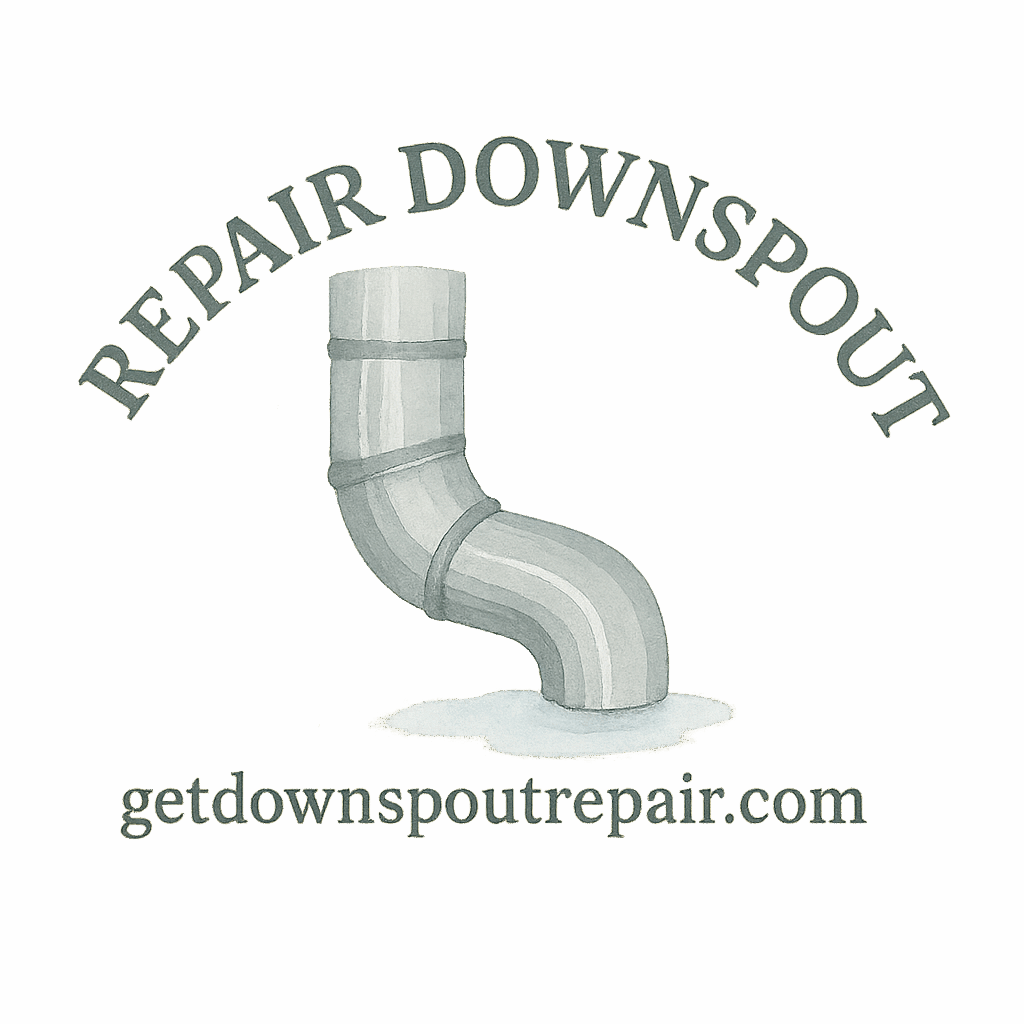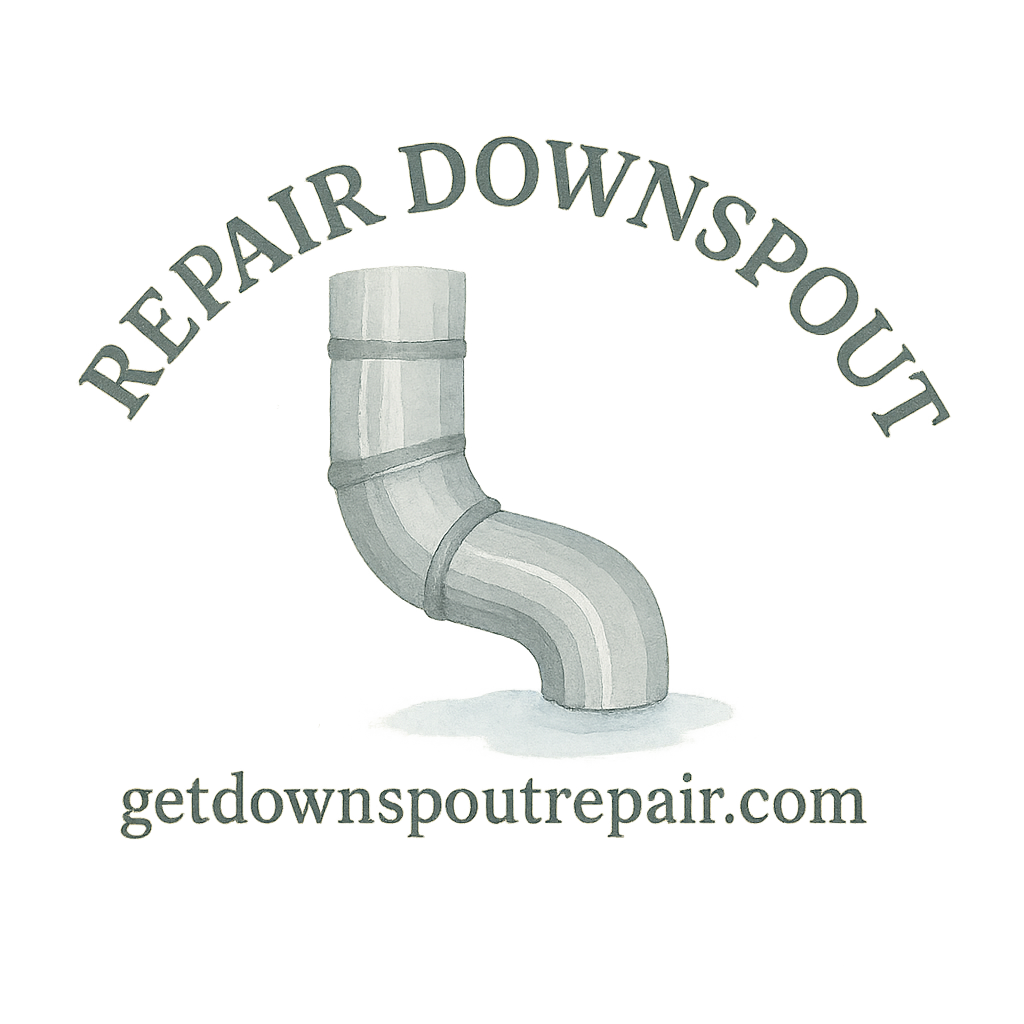Introduction: Why Downspout Repair Matters
Ever noticed rainwater spilling everywhere except where it’s supposed to go? That’s the telltale sign of a leaky or broken downspout. Left unchecked, these little leaks can turn into big problems like foundation damage, basement flooding, and mold growth. The good news? You don’t always need a pro to fix it. With the right tools and some patience, you can tackle most issues yourself. In this guide, we’ll cover 7 DIY downspout repair fixes that anyone can do to restore their gutter system and keep water flowing smoothly.
Common Causes of Downspout Leaks
Before diving into the fixes, let’s look at what’s causing the problem in the first place.
Clogs from Leaves and Debris
The number one culprit? Clogs. Leaves, twigs, and even bird nests can block water flow, causing leaks and overflow.
Loose or Misaligned Joints
If your gutter joints or downspout elbows aren’t snug, water will escape through the gaps.
Rust and Corrosion Issues
Metal downspouts eventually rust. Over time, that rust weakens the structure, leading to leaks.
Cracks and Holes in the Downspout
Sometimes, the downspout just develops holes. Whether it’s from age, weather, or impact, cracks allow water to escape before reaching the ground.
Tools and Materials You’ll Need
Basic DIY Downspout Repair Tools
Keep it simple. You’ll need: a screwdriver, pliers, caulk gun, sealant, hacksaw, and a ladder.
Affordable vs Premium Repair Gear
Want to save money? Basic tools work fine. But if you want durability, check out some premium tools that make the job easier and last longer.
DIY Fix #1: Cleaning Out Clogged Downspouts
Step-by-Step Cleaning Process
- Remove the downspout from the gutter.
- Use a plumber’s snake or garden hose to clear the blockage.
- Rinse thoroughly until water runs freely.
Preventing Future Clogs
Install gutter guards or screens to stop leaves from entering. For more prevention tips, see prevent clogging.
DIY Fix #2: Sealing Small Cracks and Holes
Using Caulk or Sealant
A tube of exterior-grade caulk can work miracles. Apply it to cracks and small holes for a watertight seal.
When to Replace Instead of Seal
If the hole is larger than a quarter, sealing won’t cut it. At that point, check out this repair basics guide.
DIY Fix #3: Reconnecting Loose Joints
Realigning Elbows and Sections
Sometimes, all you need to do is push sections back together.
Securing with Screws and Brackets
Add sheet metal screws or brackets to keep them in place. Check out DIY tools for recommendations.

DIY Fix #4: Fixing Rusty Downspouts
Sanding and Painting Method
Light rust? Sand it down, then spray with rust-resistant paint.
Protective Coatings for Longevity
Consider adding a protective coating. More on quality products.
DIY Fix #5: Replacing Damaged Downspout Sections
Cutting and Fitting New Sections
For badly damaged areas, cut out the section and replace it with a new piece.
Cost Considerations
Replacing a section isn’t expensive. For more info, visit costs and materials.
DIY Fix #6: Adding Extensions for Better Drainage
Flexible vs Rigid Extensions
Flexible extensions are easy to install, while rigid ones look neater. Both protect your foundation.
Protecting Foundation from Water Damage
Direct water away from the home. Read more on drainage protection.
DIY Fix #7: Installing Splash Blocks or Drainage Pipes
Simple Ground-Level Protection
A splash block at the base helps keep water away.
Advanced Drainage Solutions
For bigger issues, add underground drainage pipes. See repair guide for tips.
Budget-Friendly Tips for DIY Downspout Repair
Reusing Materials
Don’t throw away old sections. Sometimes, they can be cut and reused.
Choosing Cost-Effective Tools
Check out budget tips to save money without cutting corners.
When DIY Isn’t Enough: Calling a Professional
Signs You Need Expert Help
If water damage spreads to your foundation or basement, call a pro.
Benefits of Hiring Licensed Contractors
A licensed contractor ensures lasting repairs and peace of mind.
Preventive Maintenance for Downspouts
Seasonal Gutter Cleaning
Clean twice a year—spring and fall—for best results.
Using Guards and Screens
See gutter cleaning tips to make this chore easier.
Conclusion: Take Control of Your Gutter Health
Leaky gutters don’t have to be a nightmare. With these 7 DIY downspout repair fixes, you can tackle most problems in a weekend. From unclogging and sealing cracks to adding extensions and splash blocks, these small steps protect your home from costly water damage. And remember, if the job feels overwhelming, don’t hesitate to seek professional help. Your gutters—and your foundation—will thank you.
FAQs
What’s the quickest DIY fix for a leaky downspout?
Sealing small cracks with exterior caulk is the fastest temporary solution.
How often should I clean my downspouts?
At least twice a year, more if you live near trees.
Can I repair rusted downspouts without replacing them?
Yes, light rust can be sanded and painted. Severe rust requires replacement.
How do I know if my downspout needs replacing?
If holes are larger than a quarter or rust has eaten through, it’s time to replace.
Are extensions really necessary for every home?
Yes, they keep water away from the foundation, preventing costly damage.
What’s the average cost of DIY downspout repair?
Anywhere from $20 to $150 depending on tools and materials.
Should I attempt DIY if I’m not handy with tools?
Start small. Try unclogging or sealing first. For complex repairs, call a pro.


